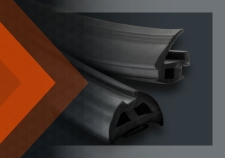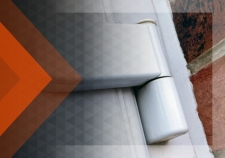
In this guide, we look at the security standards required by many of the UK’s top insurers and what it means for you and your customers. This guide only applies to residential final exit doors where there are no specific escape or fire regulations.
Is there a minimum standard?
Surprisingly, there is not a universally recognised standard that all insurers must stick to. All insurers create their own standards, but many use the RISCAuthority guidance. Many of the UK’s largest insurers are members of RISCAuthority, including Aviva, Zurich, and their associated brands.
In this article, we will look at the guidance issued to insurers by RISCAuthority, rather than each individual insurer. That means that you should treat this article only as a rough guide and it is important that your customer checks their policy for any specific requirements relating to their cover as all policies are treated individually.
Are all homes treated equally?
Some insurers will impose higher security standards, which are often referred to as Minimum Security Standards, based on the nature of the policy, type of property, value, or loss history. The most common reason for these standards is when the insured property is in a high-risk geographic area.
In this article, we’ll only look at the Minimum Security Standards set out by RISCAuthority. You can find the full guide here: https://www.riscauthority.co.uk/public-resources/documents/resource/s25-physical-security-for-homes-guidance-for-insurers-329
What do the standards say?
The standards set out guidance in relation to different types of doors. It also refers to different door materials, but it is accepted that a multipoint lock can be used on a timber door, whereas a mortice lock should not be used on a plastic door.
You will also notice that the recommendations in relation to cylinders are very wide-ranging. However, they do specifically list references to TS007, and EN1303, so it is easy to see that insurance may soon recommend a greater level of security than a simple 5 pin cylinder.
Single hinged doors
Timber doors

A lock ‘certified’ as meeting BS 3621 or A lock ‘certified’ as meeting BS 8621, provided that:
- Any glazing in the door, or in any window (fixed or opening) adjoining either side of the door, is laminated glass;
- Any letter flap in the door, or next to it, has an access restrictor or internal mailbox that prevents external access, by hand or tools, to the internal lock release mechanism.
Plastic Doors

Either:
- A multi-point lock assembly ‘certified’ as meeting PAS3621; or
- A multi-point lock assembly having at least three moving fastening points operated by a handle secured by either:
- a 3 star TS007 cylinder; or
- a cylinder ‘certified’ as meeting BS EN 1303 at Key Security Grade 5, Attack Grade 2; or
- a lock cylinder with five (or more) pins.
Metal doors

A mortice swing or hook lock; fitted with either:
- a 3 star TS007 cylinder; or
- a cylinder certified as meeting BS EN 1303 at Key Security grade 5, Attack Grade 2; or
- a lock cylinder having five (or more) pins.
Stable doors
The guidance refers to fitting one of the options below on each of the sections of the stable door. We stock a range of multipoint locks that are specifically designed for stable doors, which can be found on the links below.
Timber doors

A lock ‘certified’ as meeting BS 3621.
Plastic Doors

Either:
- A multi-point lock assembly ‘certified’ as meeting PAS3621; Or
- A multi-point lock assembly having at least three moving fastening points operated by a handle secured by either:
- a 3 star TS007 cylinder; or
-
a cylinder ‘certified’ as meeting BS EN 1303 at Key Security Grade 5, Attack Grade 2;
- a lock cylinder with five (or more) pins.
Sliding Doors
The recommendations for sliding doors are very similar to single doors and they cater to a range of locking options. One thing to note is that they specify that anti-lift devices must be fitted in all circumstances.
Timber, Plastic or Metal Doors

Either:
- A multi-point lock assembly ‘certified’ as meeting PAS3621; Or
- a multi-point lock assembly having at least three moving fastening points operated by a handle; Or
- a mortice hook lock
all secured by either:
- a 3 star TS007 cylinder; Or
- a cylinder ‘certified’ as meeting BS EN 1303 at Key Security Grade 5, Attack Grade 2;
- a lock cylinder with five (or more) pins.
And 2 anti-lift devices fitted within the top retaining track, one being located at (or near) each corner of the door. Note that none of the insurance policies that we reviewed, refer to the requirement for anti-lift devices. Whilst they perform a different function, for a belt and braces approach, we’d suggest adding:
Double Hinged Doors

The guidance sets out requirements in relation to each of the opening doors. The 1st opening leaf is set out below and the requirements for the second opening leaf are the same as for a single door, set out above.
1st opening leaf
- a multi-point lock assembly having at least two moving fastening points operated by a handle secured by either:
- a 3 star TS007 cylinder or
- a cylinder ‘certified’ as meeting BS EN 1303 at Key Security Grade 5, Attack Grade 2. or
- a cylinder having five (or more) pins.
Or
- one of the following:
- rebate bolts fitted at both the top and bottom of the closing edge of the door; or
- key-operated mortice rack bolts fitted at (or near) both the top and bottom corners of the closing edge of the door; Or
- lockable surface-mounted bolts fitted internally at (or near) both the top and bottom corners of the closing edge of the door
2nd opening leaf
Refer to the guidance relating to single, hinged doors, above.
Do all insurance policies contain this guidance?
No, every insurance policy will be different and you should check with your customer as to their specific requirements. The purpose of this article is to outline some of the standards that may be present in insurance company requirements, but it is not a definitive list. We would also recommend that your customer checks with their insurance company to ensure that their policy wording is up to date before any work is undertaken.





